
Firefighters risk their lives to protect our communities. While their bravery and skill are commendable, Firefighting effectiveness greatly depends on the equipment they use, including firefighting vehicles. These 6 most common types of firefighting vehicles are purpose-built to assist firefighters in various emergency scenarios and situations.
As a Division Chief I, along with our apparatus committee, was involved in the process of building firefighter vehicle specifications, developing a budget process to retain funding, and overseeing the bid process for all our vehicle purchases.
This process is very important to any fire department. Weather your a fire department or fire district It’s always a challenge to stay fiscally responsible while still keeping your firefighting fleet safe and effective.
Modern day firefighting vehicles can cost well over $500,000.00 dollars with aerial apparatus now costing in many cases well over 1 million dollars.
In this post we will explore the six most common types of firefighting vehicles and their specific duties. Understanding the capabilities of these vehicles is crucial for both firefighters and the public to appreciate the intricacies of firefighting operations.
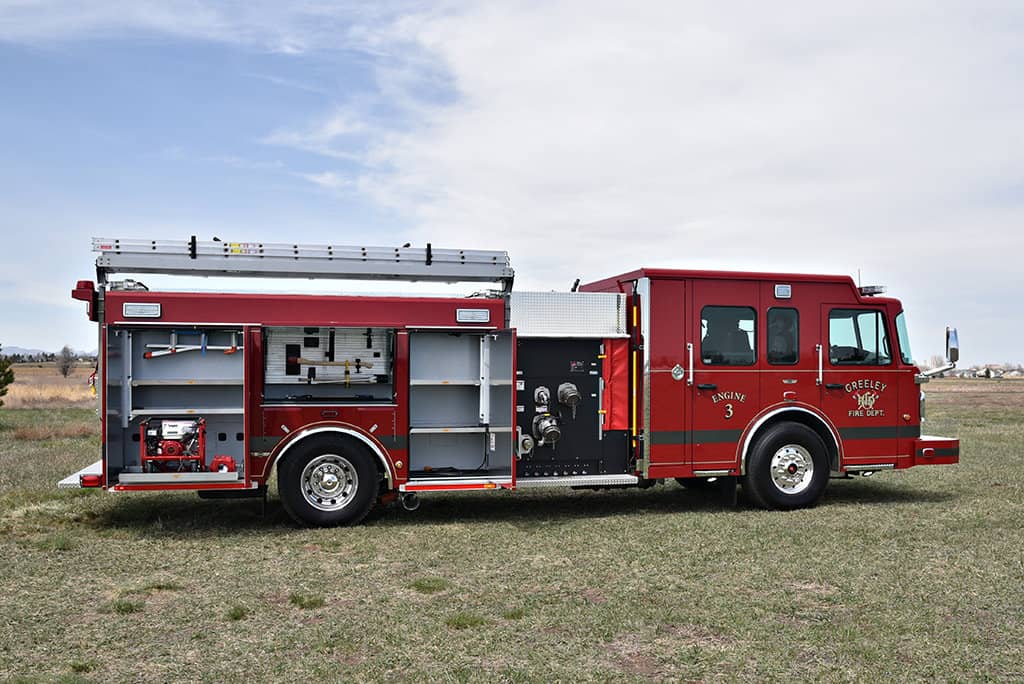
Fire Engines
Fire engines, also known as pumpers or fire trucks, are the backbone of any firefighting fleet. These vehicles are equipped with a water pump, water tank, hoses, ladders and various hand tools and equipment. Their primary duty is to carry and deliver water to extinguish fires. Fire engines can rapidly deploy firefighters to the scene of an incident and provide an immediate water supply.
Fire engines are versatile and can handle a wide range of emergencies, including structure fires, vehicle fires, traffic accidents and hazardous material incidents. Most fire engines of today are staffed with personal trained in emergency medical treatment. Engines often respond with an ambulance to medical calls to assist in patient care. Read more on why engines respond to medical call by clicking here.
Staffing of an engine can vary from department to department. Typically you will see staffing of 3 to 4 firefighters.
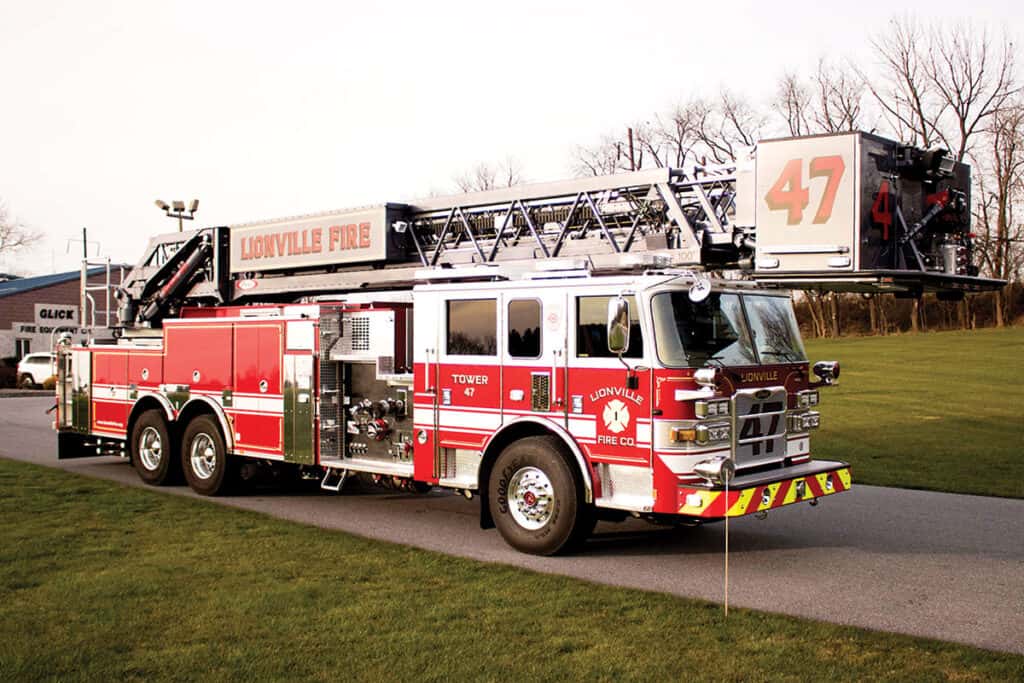
Aerial Trucks
Aerial trucks, also called ladder trucks or aerial ladders, are equipped with long, extendable ladders mounted on a turntable at the rear of the vehicle. These ladders can reach impressive heights and are invaluable in high-rise buildings or situations where access to upper floors is limited. Aerial trucks allow firefighters to perform rescues, ventilate structures, and provide elevated water streams to suppress fires from above. In addition to the ladder, these vehicles also carry various tools, equipment, and water tanks.
Aerial trucks play a vital role in both firefighting and rescue operations, offering an elevated vantage point for rescue and fire suppression. If the department does not staff a Rescue truck the Aerial truck will often cover the tasks normally done by the crew of the rescue company. These tasks can include extrication a traffic accident, technical rescues such as high angle rope rescue.
Aerial staffing is usually 4 firefighters, bigger departments in large cities my staff as many as 6 firefighters on their areal apparatus.
To pursue a career as a firefighter, it is essential to meet specific education and training requirements. While a high school diploma or equivalent is the typical entry-level education, additional post secondary instruction and certifications are often necessary for aspiring firefighters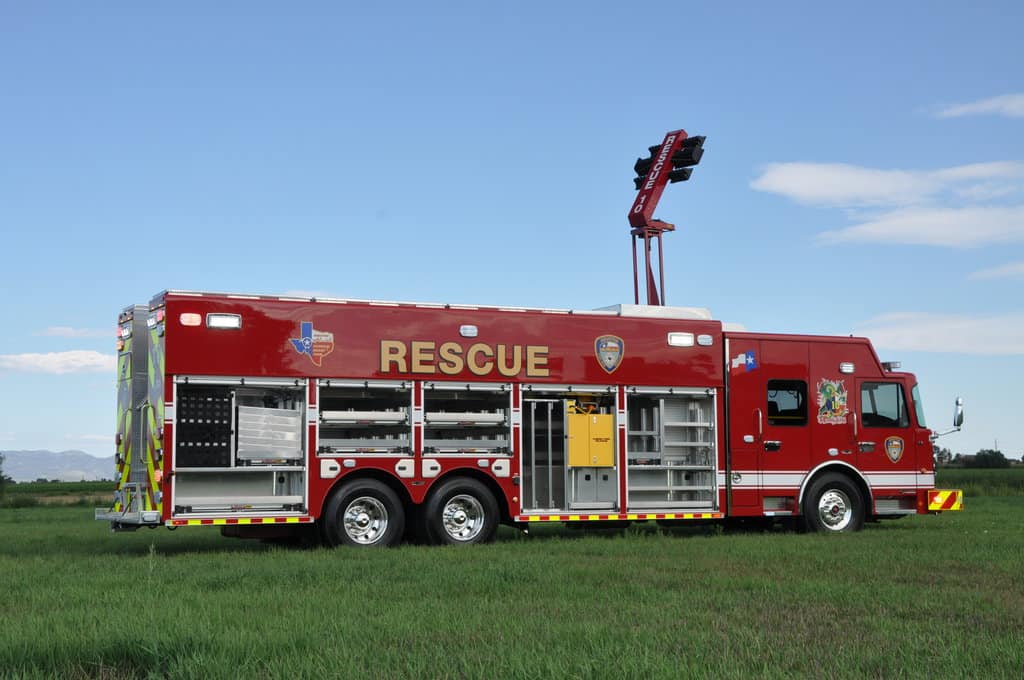
Rescue Trucks
Rescue trucks, also known as squad trucks or heavy rescue vehicles, are designed to handle complex rescue operations. These vehicles are equipped with an array of specialized tools and equipment, including hydraulic cutters, spreaders, and lifting equipment. Rescue trucks are essential for extricating trapped victims from vehicle accidents, collapsed structures, or confined spaces. They also carry equipment for swift-water rescues, rope rescues, and technical rescue scenarios.
In addition to their rescue capabilities, these trucks often carry emergency medical equipment, allowing firefighters to provide immediate medical assistance to victims.
Staffing can vary, usually 3 to 4, however depending on the focus of the rescue company you could see staffing of 2 if their primary focus is assisting the ambulance on medical calls or traffic accidents to staffing as high as 8 in major cities.
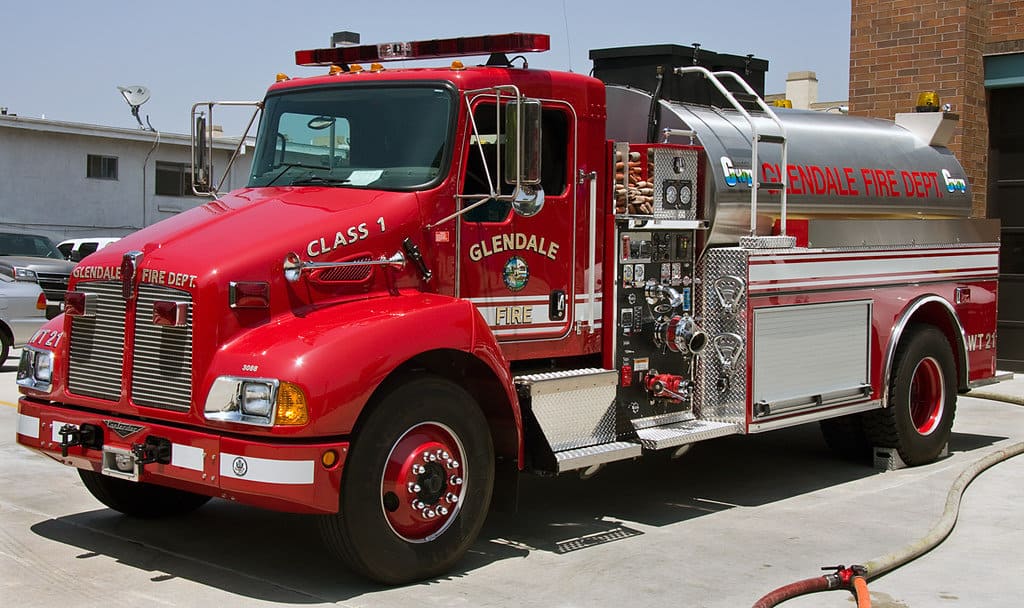
Tanker Trucks
Tanker trucks, also called water tenders or water tankers, are designed to transport large quantities of water to the scene of a fire. Just a side note, Water tankers can also refer to planes and helicopters used in fighting wild land fires.
These vehicles have a significant water capacity, ranging from a few thousand gallons to tens of thousands of gallons. Tanker trucks play a critical role in areas with limited access to hydrants or where water supply is scarce. They supply water to fire engines or other firefighting vehicles, ensuring a constant and sufficient water source for firefighting operations. Tanker trucks are often used in rural areas, wildland firefighting, or during situations where a supplementary water supply is required.
Staffing is usual only 1 or 2 firefighters and is a secondary vehicle, meaning its usually not staffed full-time and is staffed up as needed.
Read more about becoming a Wildland Firefighter.

Brush Trucks
Brush trucks, also known as wildland fire engines or grass rigs, are specially designed for fighting fires in natural areas, such as forests, grasslands, and brush-covered regions. These vehicles are smaller and more maneuverable than traditional fire engines, enabling them to navigate rough terrains and narrow trails. Brush trucks are equipped with high-clearance chassis, off-road tires, and specialized firefighting equipment, including pumps, hoses, and foam systems.
They carry water and other fire retardants to extinguish fires in areas where access for larger vehicles is limited. Brush trucks are essential in controlling and suppressing wildfires, protecting natural resources, and preventing fire spread in remote locations.
Staffing of brush trucks can very greatly from department to department. Depending of the needs of the response area the firefighter brush truck can be staffed full time with 2 firefighters or secondary staffing as needed.
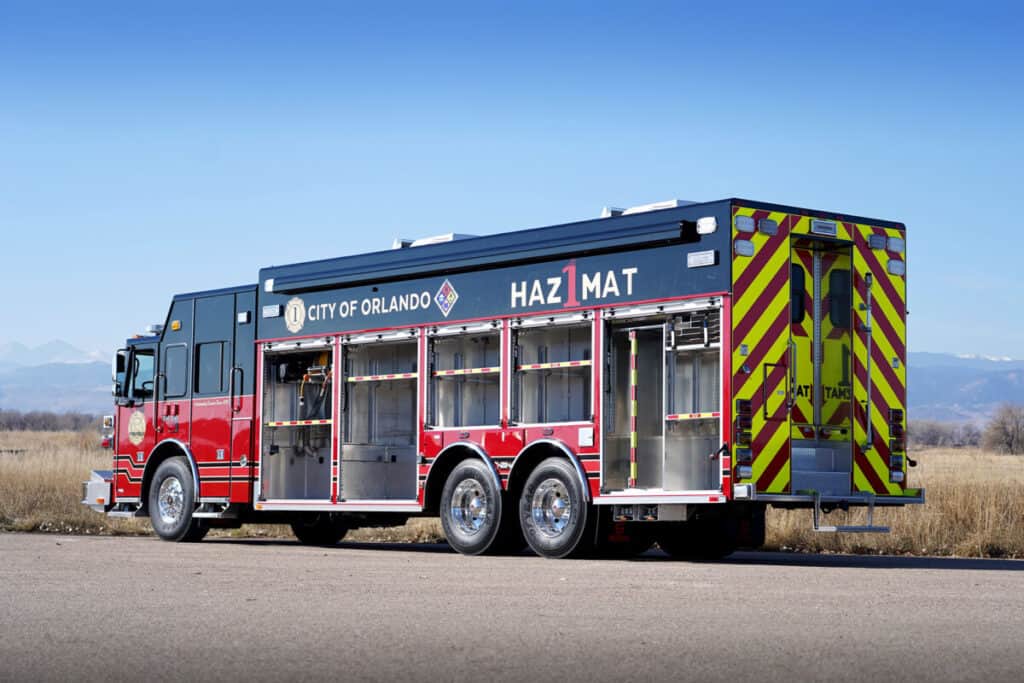
Hazardous Materials (Hazmat) Units
Hazmat units, also called chemical or decontamination units, are designed to handle hazardous material incidents. These vehicles are equipped with specialized equipment and protective gear to deal with chemical spills, leaks, or other hazardous substances.
Hazmat units carry absorbents, neutralizing agents, and decontamination showers to mitigate the risks associated with chemical, biological, radiological, and nuclear (CBRN) incidents. These units often work in collaboration with other emergency response agencies to secure the affected area, protect responders, and minimize the impact on the environment and public health.
Hazmat units play a crucial role in ensuring the safe handling, containment, and cleanup of hazardous materials, protecting both responders and the community.
Firefighting vehicles are integral to the effective and efficient management of emergencies. From fire engines and aerial trucks to rescue trucks, tanker trucks, brush trucks, and hazmat units, each vehicle serves a specific purpose in the realm of firefighting operations.
Understanding the capabilities and duties of these vehicles is vital for firefighters, emergency response personnel, and the general public. By recognizing the contributions and limitations of each type of vehicle, we can foster greater appreciation and support for the remarkable efforts of firefighters.
Street Smart Firefighting is an exciting new approach to improve your fire ground Operations! Listen to what the fire service leaders have to say about Bob Bingham’s new book, “Street Smart Firefighting.” This book is the most practical, no no-nonsense and “tell-it-like-it-is” resource you will find. I

